Scar correction after medial epicanthoplasty, or shape correction of inner corner of the eyes.
Who is revision medial epicanthoplasty suitable for?
- For those who wish to correct the shape of the post-medial epcanthoplasty.
- For those who want to hide the scar of medial epicanthoplasty.
- For those who want to widen the distance between their eyes.
- For those who want to get closer to the shape they had before medial epicanthoplasty.
An explanation of revision medial epicanthoplasty.
Revision medial epicanthoplasty is a procedure that corrects the inner corner of the eyes when 1) the Mongolian fold has been removed too much and the distance between the eyes has become too close, or 2) when the scar from medial epicanthoplasty is bothersome and needs to be corrected, or 3) when the shape of medial epicanthoplasty is not as desired and the patient wants to restore it to its original shape.
A new Mongolian fold is created to conceal the inside of the eye.This surgery is also performed when the distance between the eyes is too narrow and needs to be widened.Revision medial epicanthoplasty can be used to make the scarring of medial epicanthoplasty less noticeable.
If the patient desires that the distance between the eyes be even narrower, scar resections can be performed.
If the patient desires that the distance between the eyes be wider, various revision procedures can be performed according to the patient’s condition and wishes.
・If you want to revert back to the original shape of the inner corner of the eyes (or return closer to the original shape).

・If you want to reduce a scar on the inner corner of the eye.

Features of our revision medial epicanthoplasty
- We design your eyes according to your wishes, for example, hiding the lacus lacrimalis if it is too prominent, or widening the space between the eyes if they are too close together.
- For local anesthesia, we use 34G ultra-fine needles (needle thickness 0.2mm) to minimize pain.
- Surface anesthesia and intravenous anesthesia are used for those who are afraid of even the slightest pain.
- The day after surgery, you can shower, wash your face, and apply makeup except for on your eyelids.
- Skin sutures can be removed early on the fourth or fifth day, because we use the buried suture method with 7-0 ultra-fine absorbable thread (plastic surgical sutures).Scarring will be minimal.
- Skin suturing with transparent thread is also available.
- You can apply makeup to your eyelids the day after your stitches are removed.
- Depending on the patient’s needs, we can use the musculocutaneous flap method, reverse Z-plasty, V-Y plasty, Y-V plasty, the island flap method, and the shark fin flap method to restore the skin appropriately.
Revision medial epicanthoplasty explained
Scar resection / musculocutaneous flap method
A prominent scar is neatly reduced and carefully re-stitched.
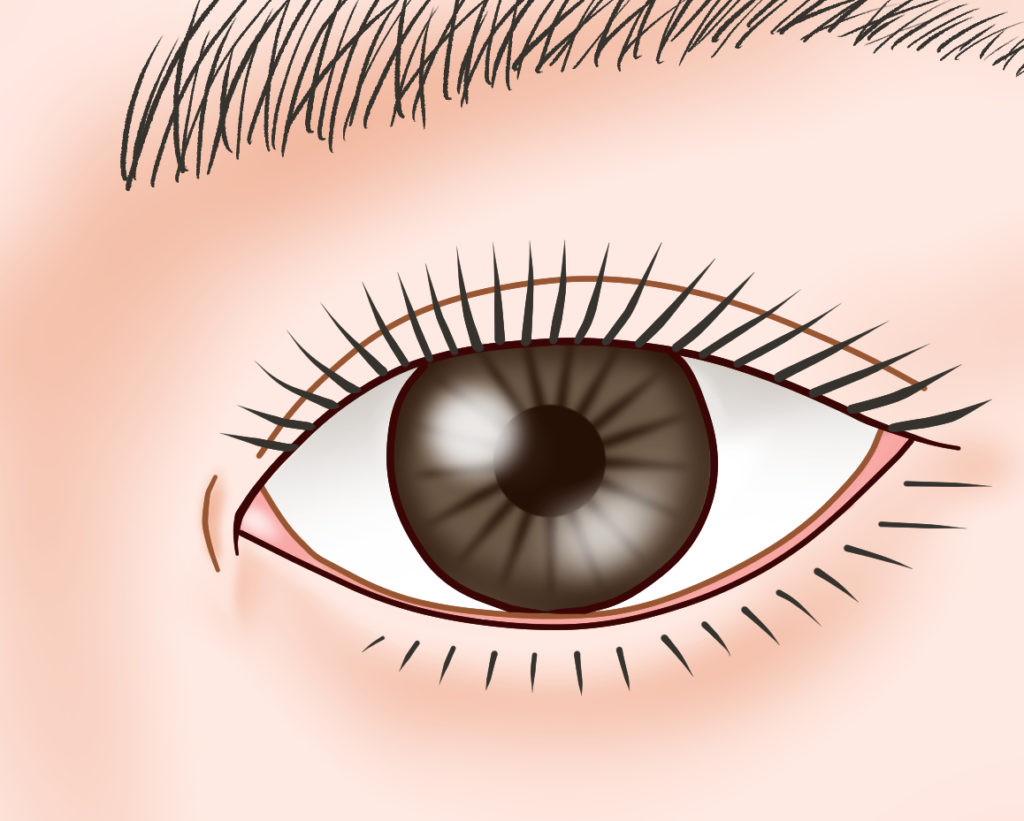
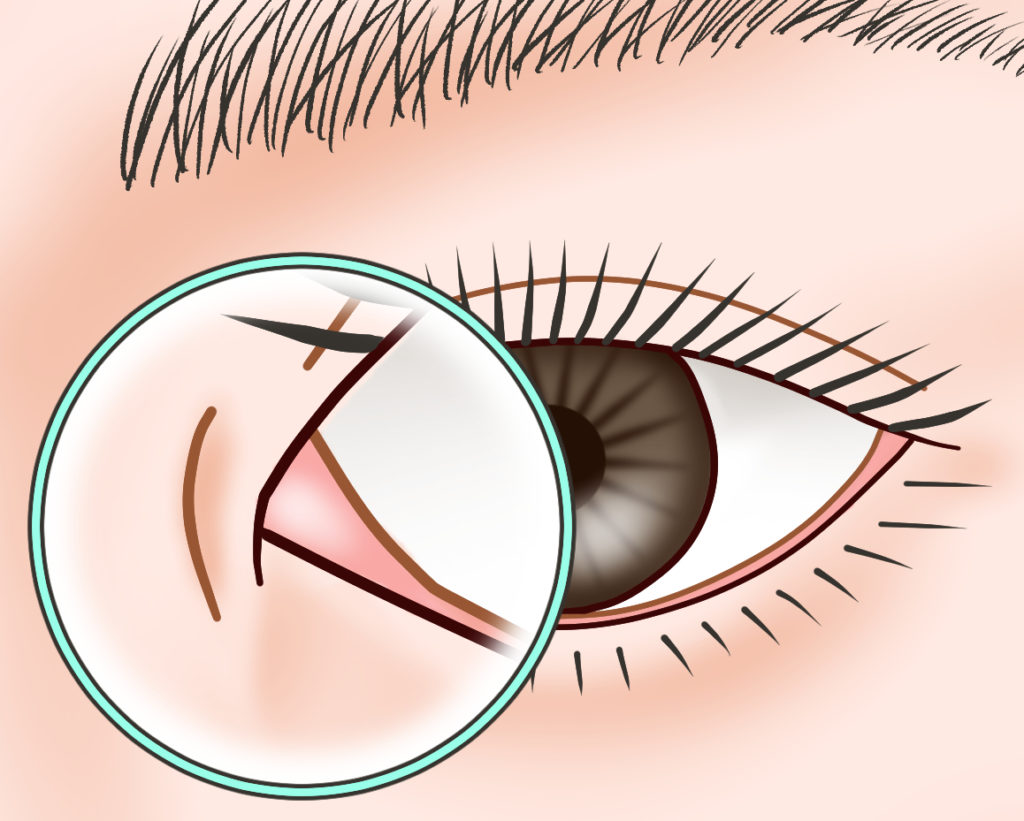
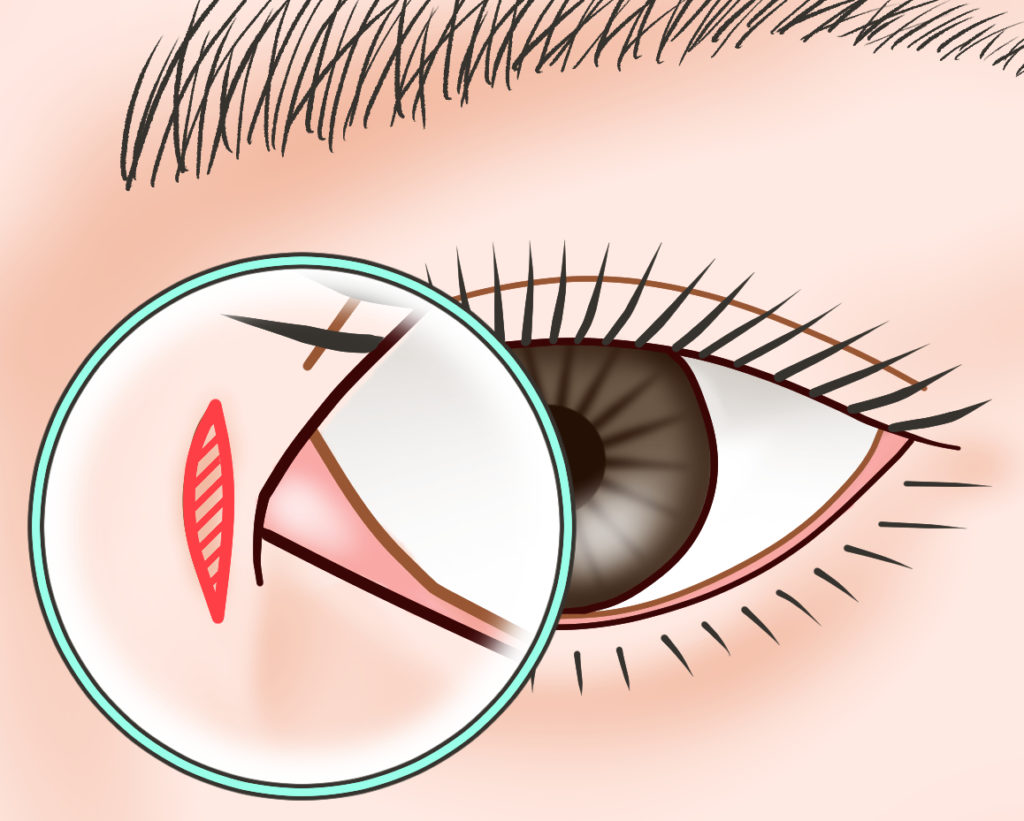
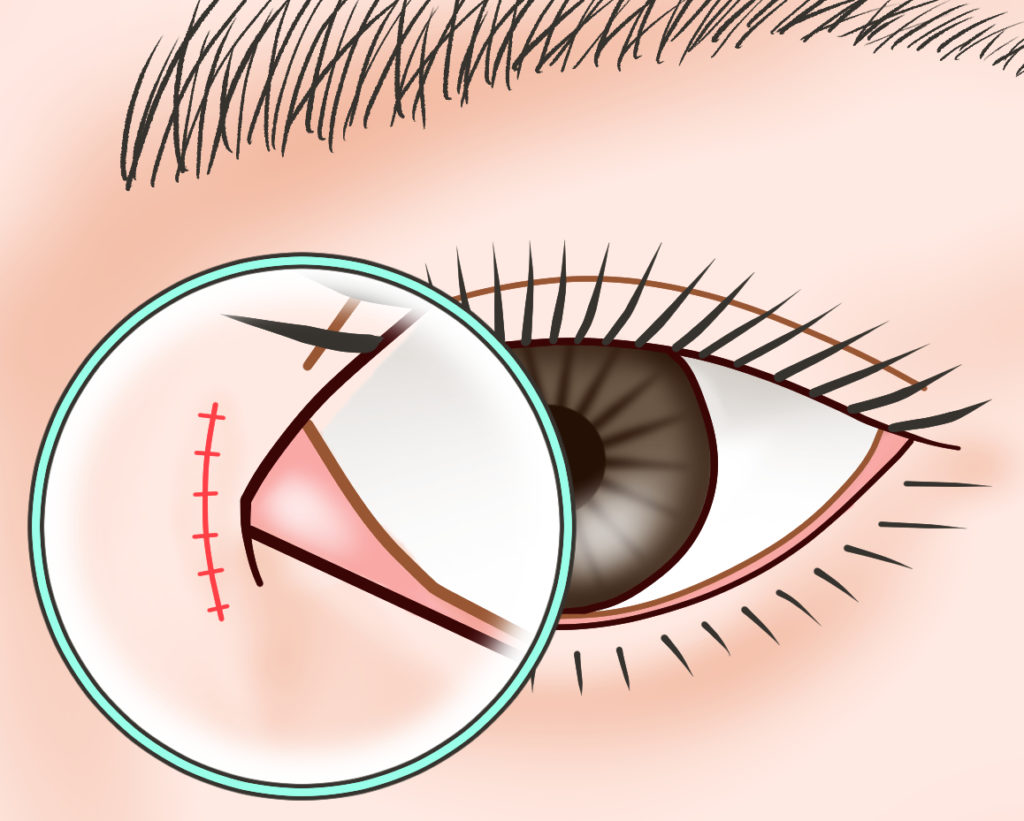
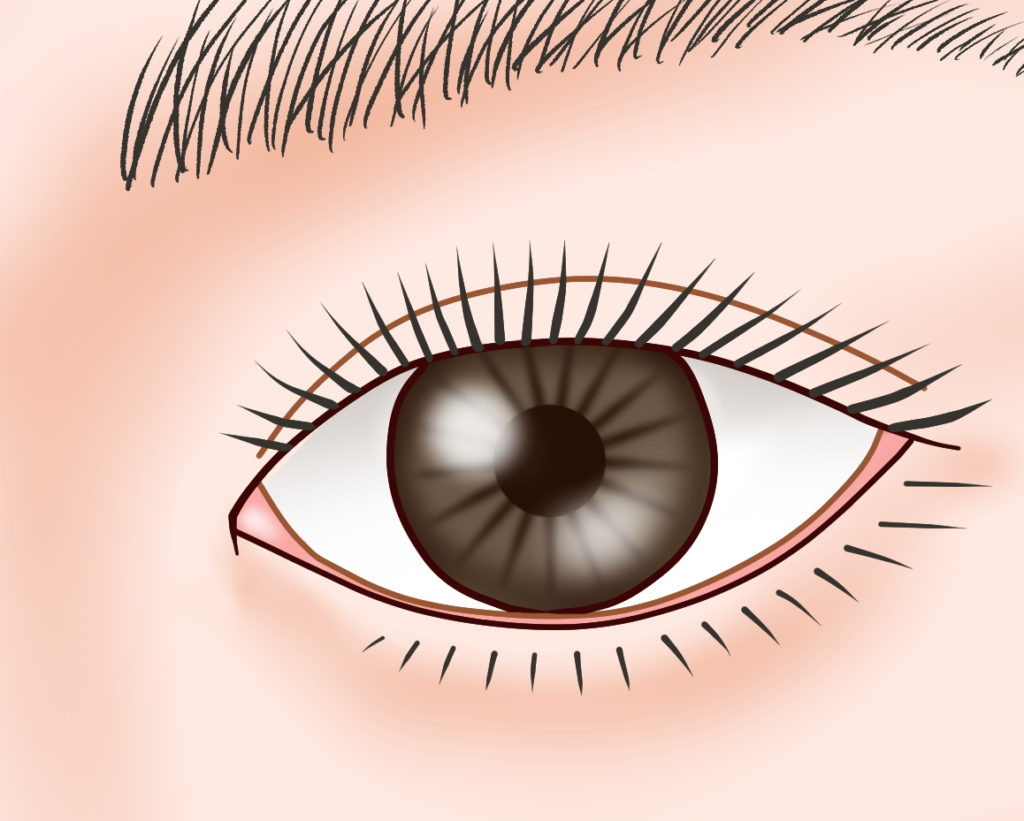
Revision medial epicanthoplasty using reverse Z-plasty
This method uses incisions to reverse the Z-plasty.
A flap is created with the skin on the nasal side of the medial canthus, and it is then sutured and pulled down toward the lower eyelid and secured to form the Mongolian fold.
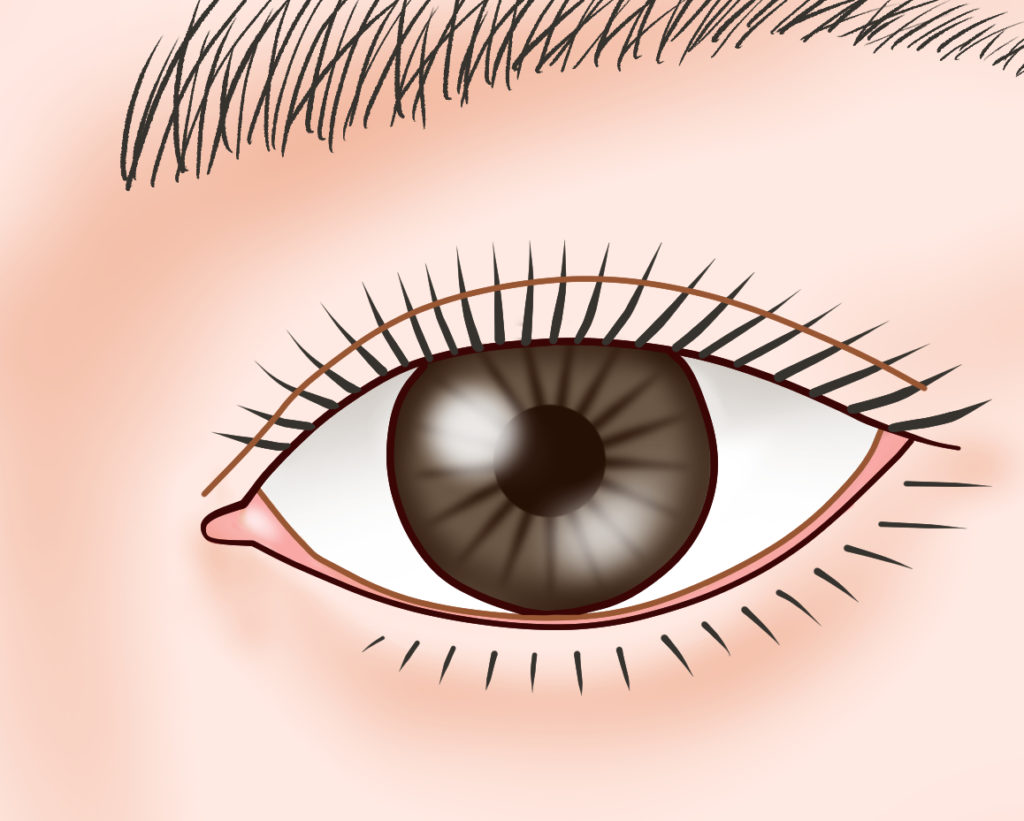
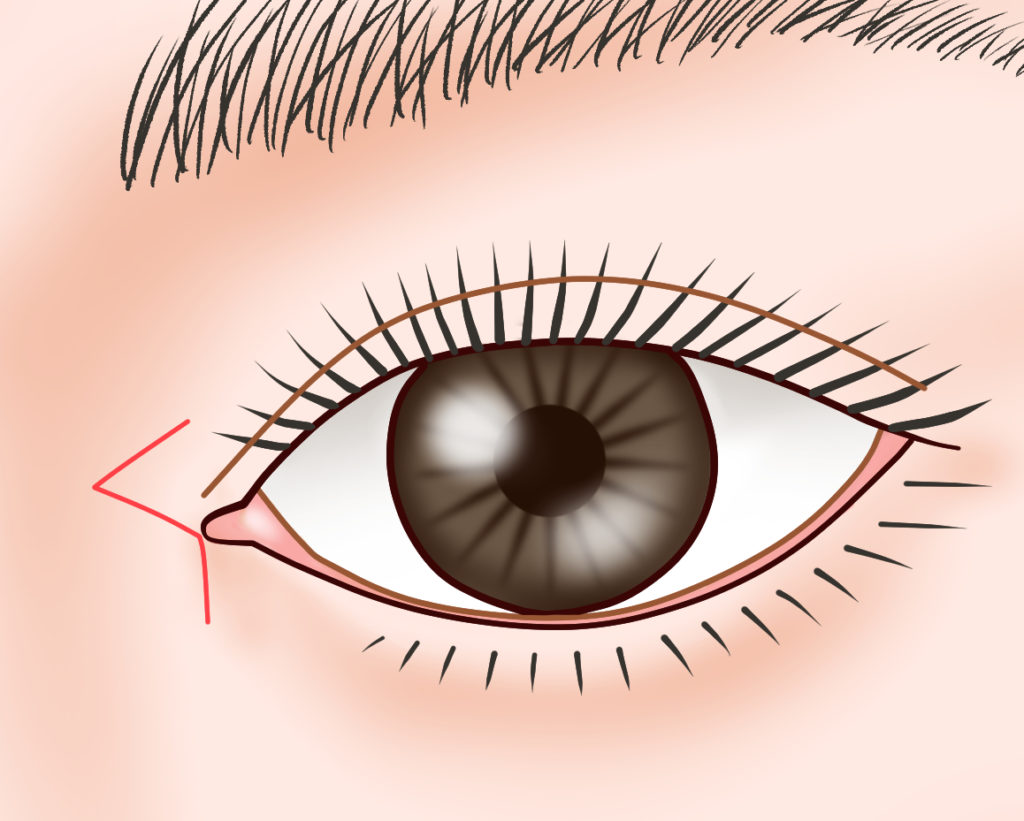
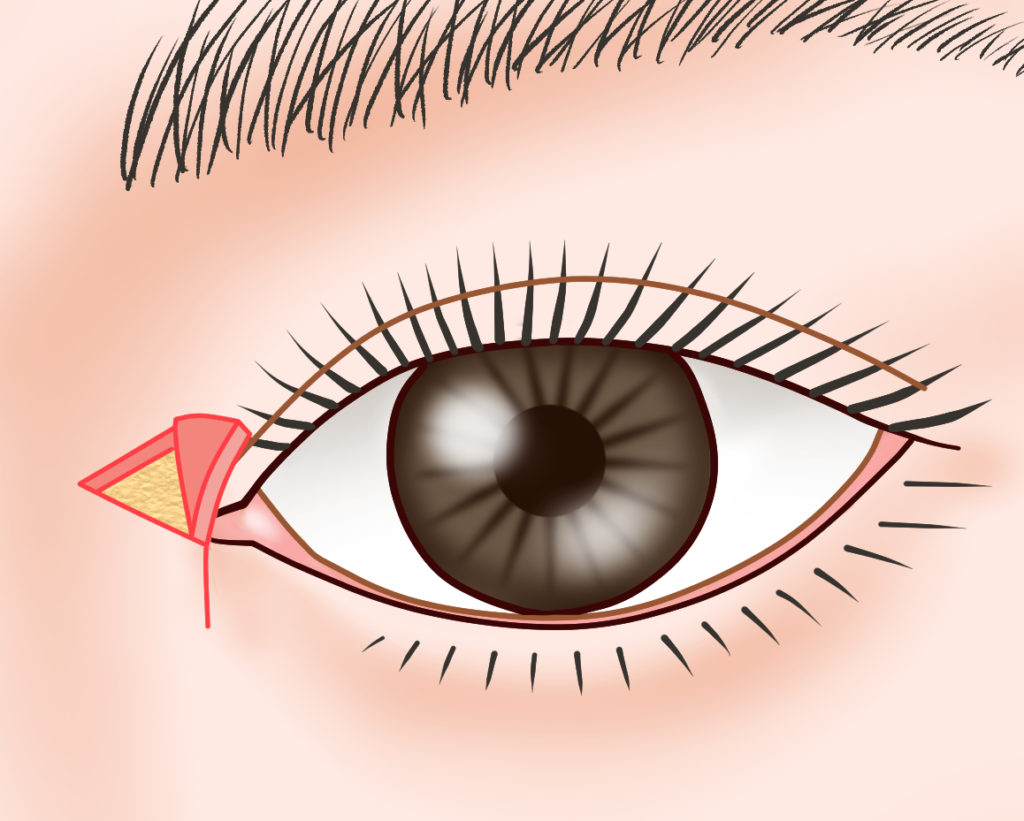
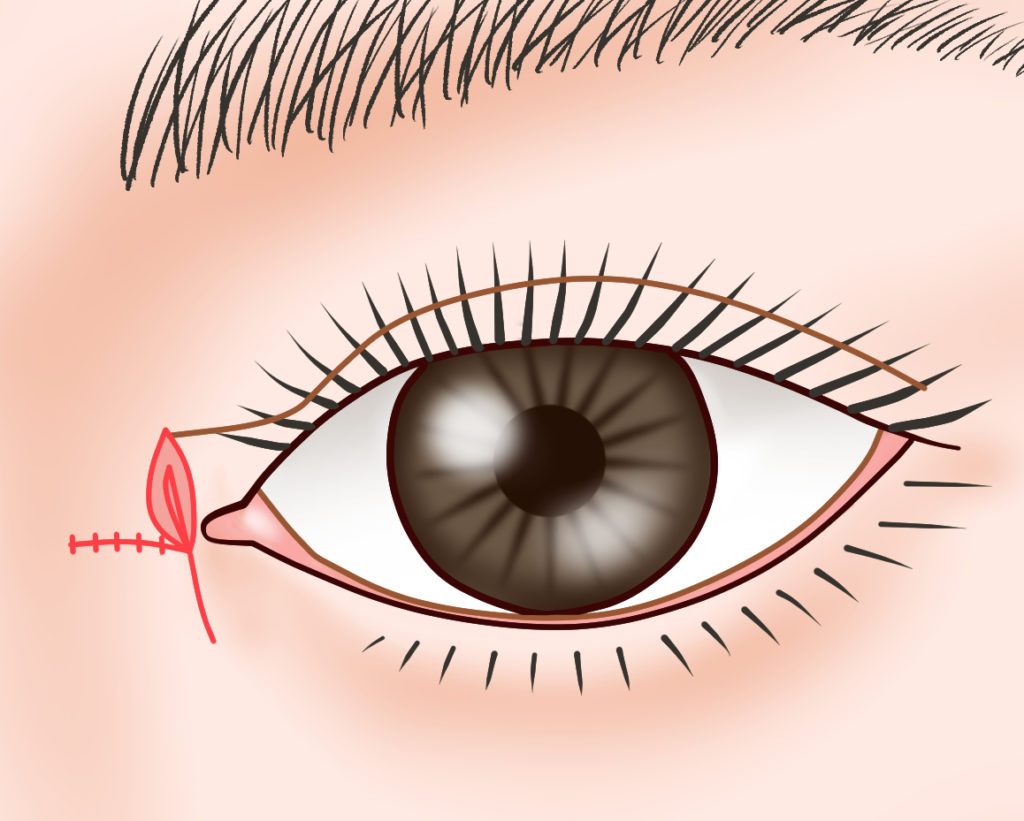
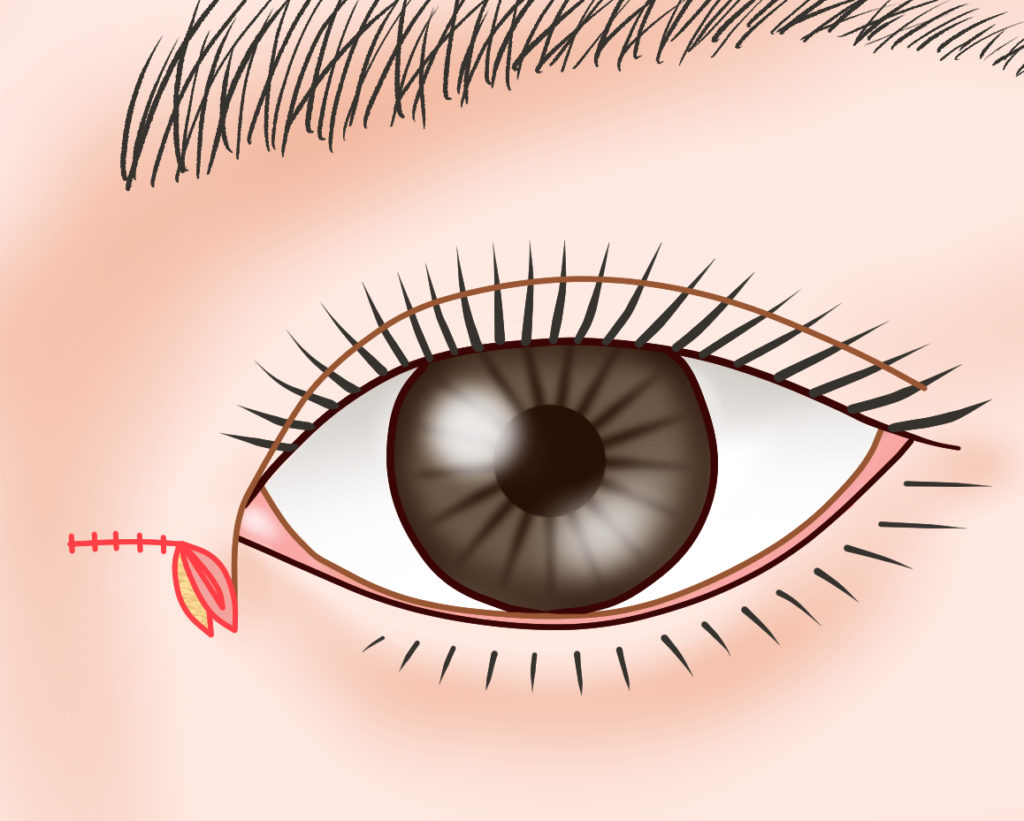
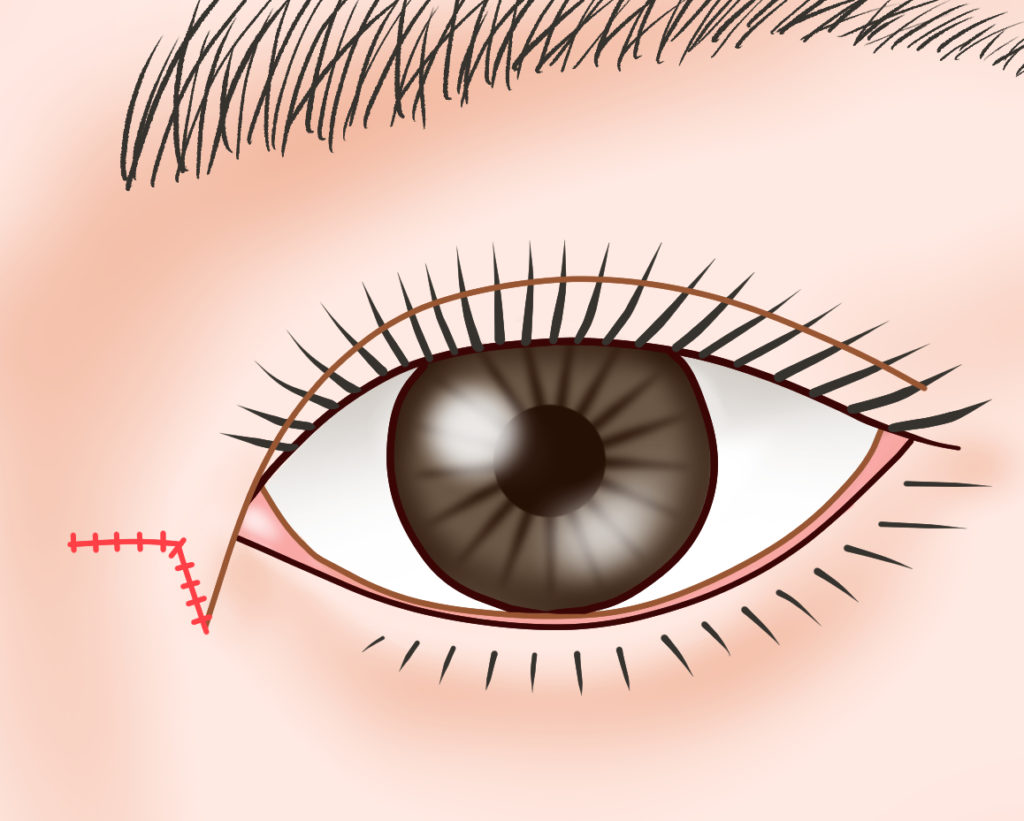
Shark fin flap method
This method, presented by Dr. Doi of Komachi Clinic, is used when there is insufficient skin in the eye socket area or when there is a prominent scar.
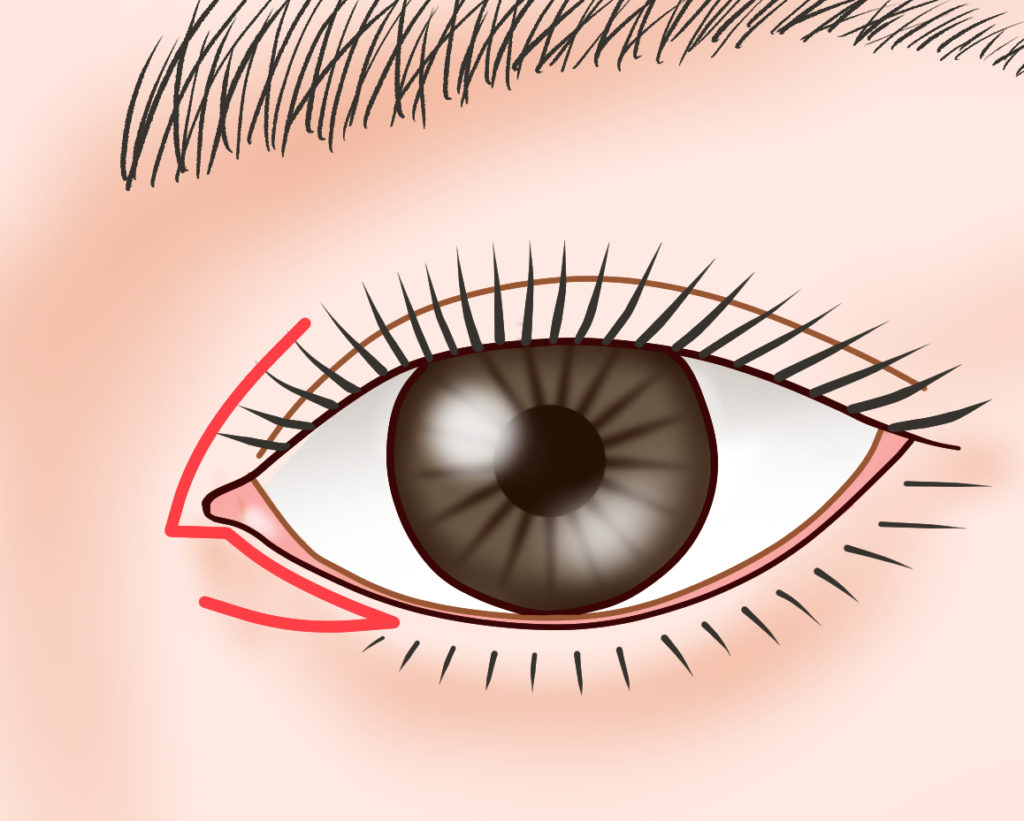
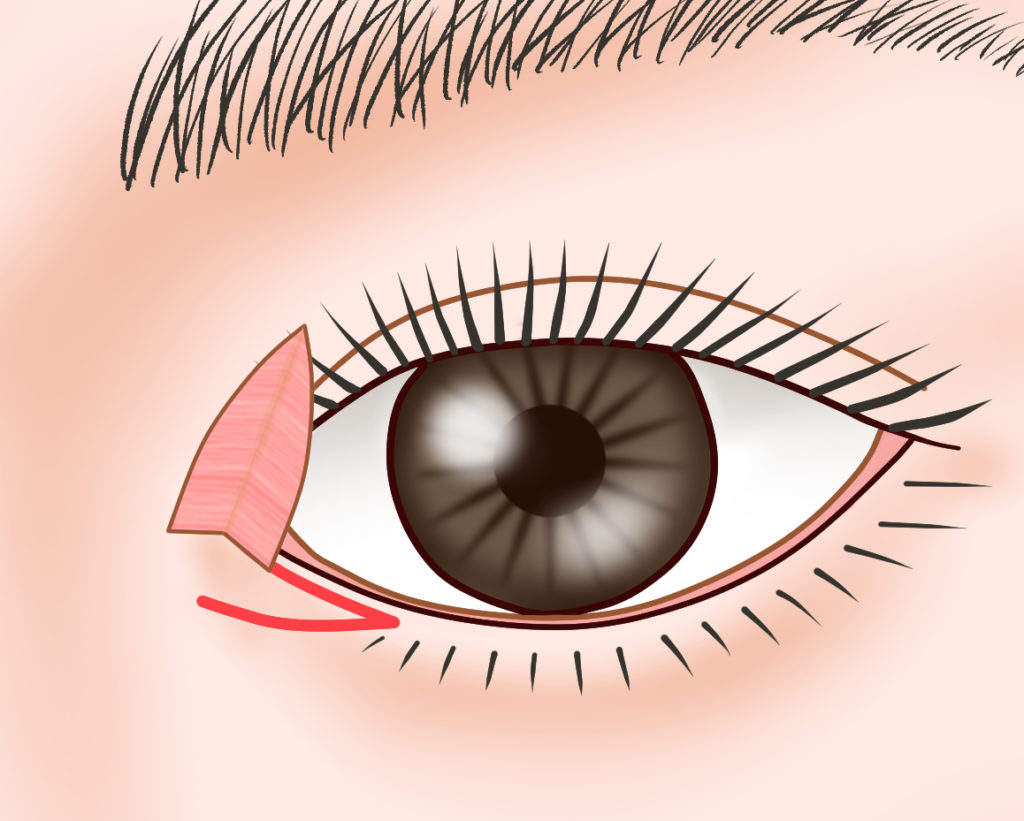
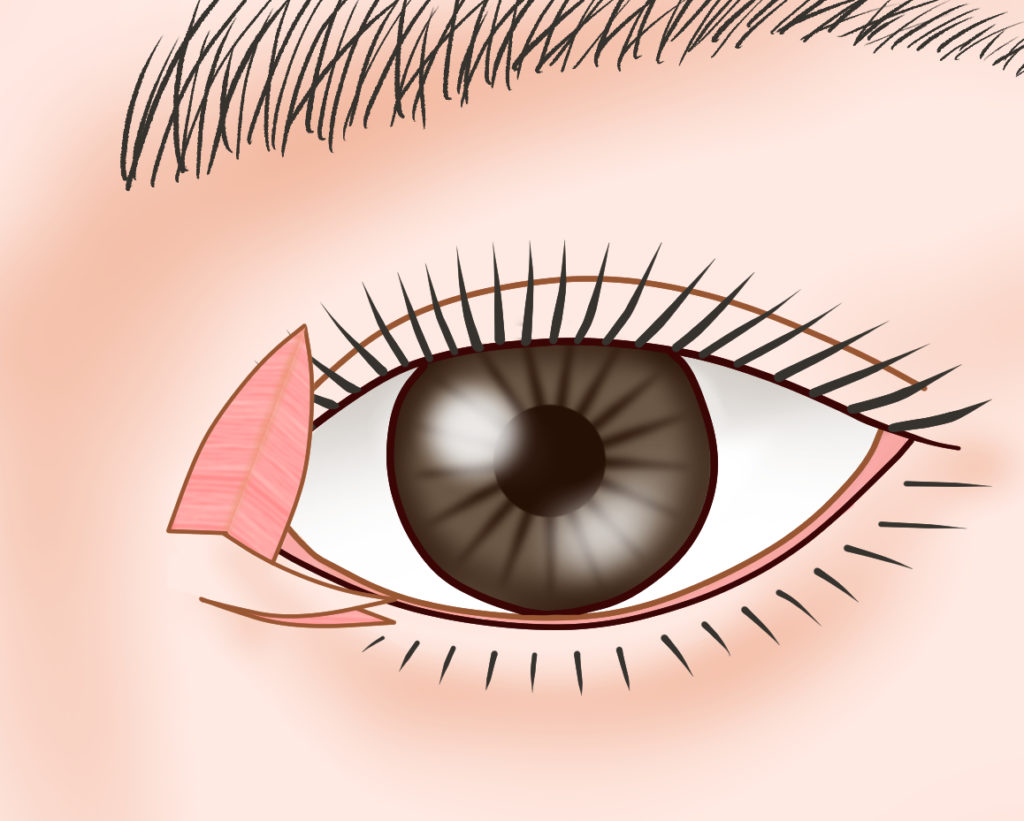
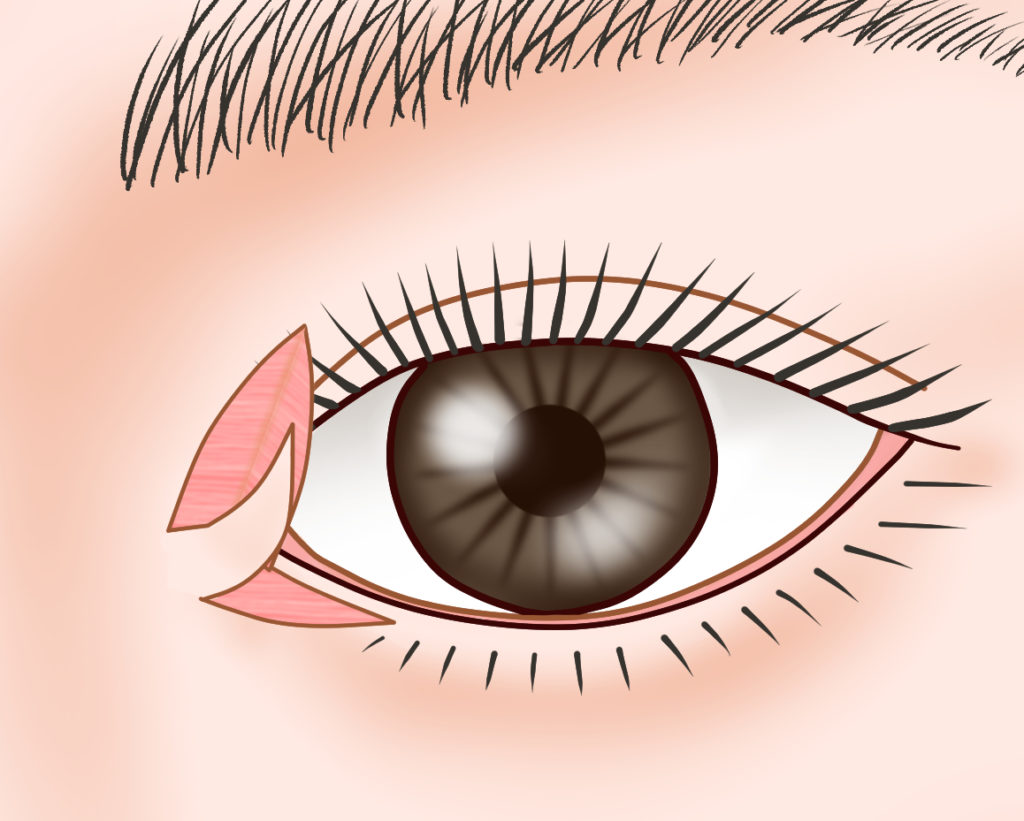
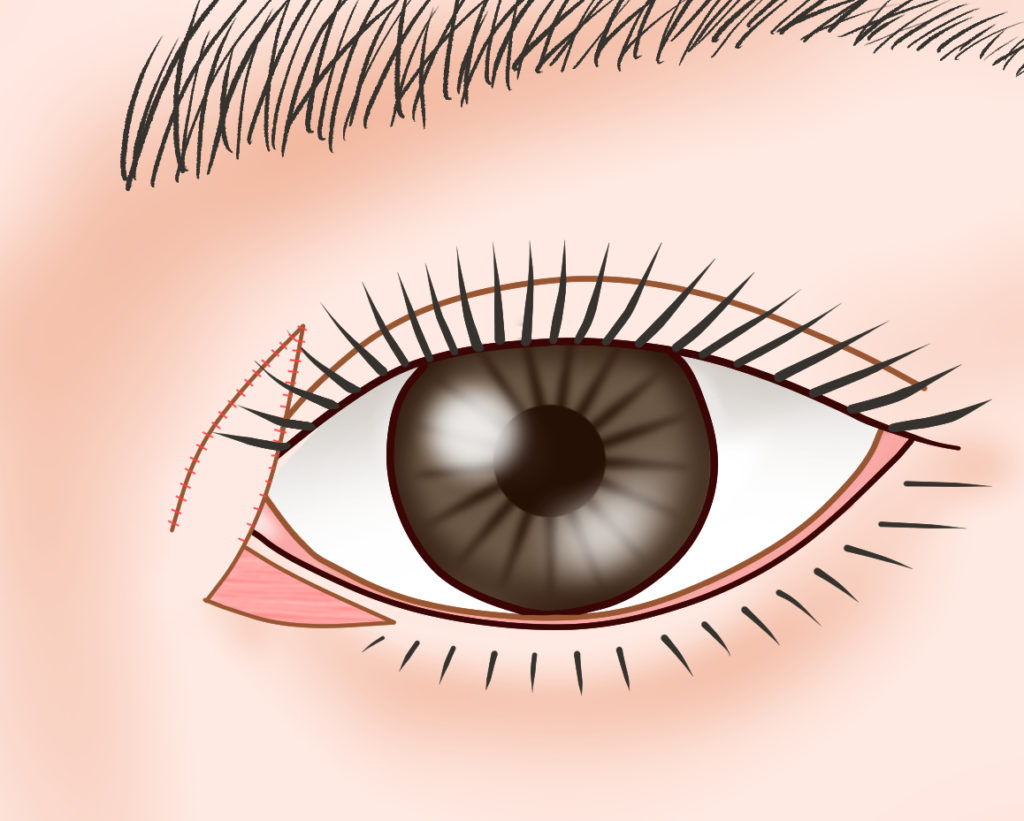
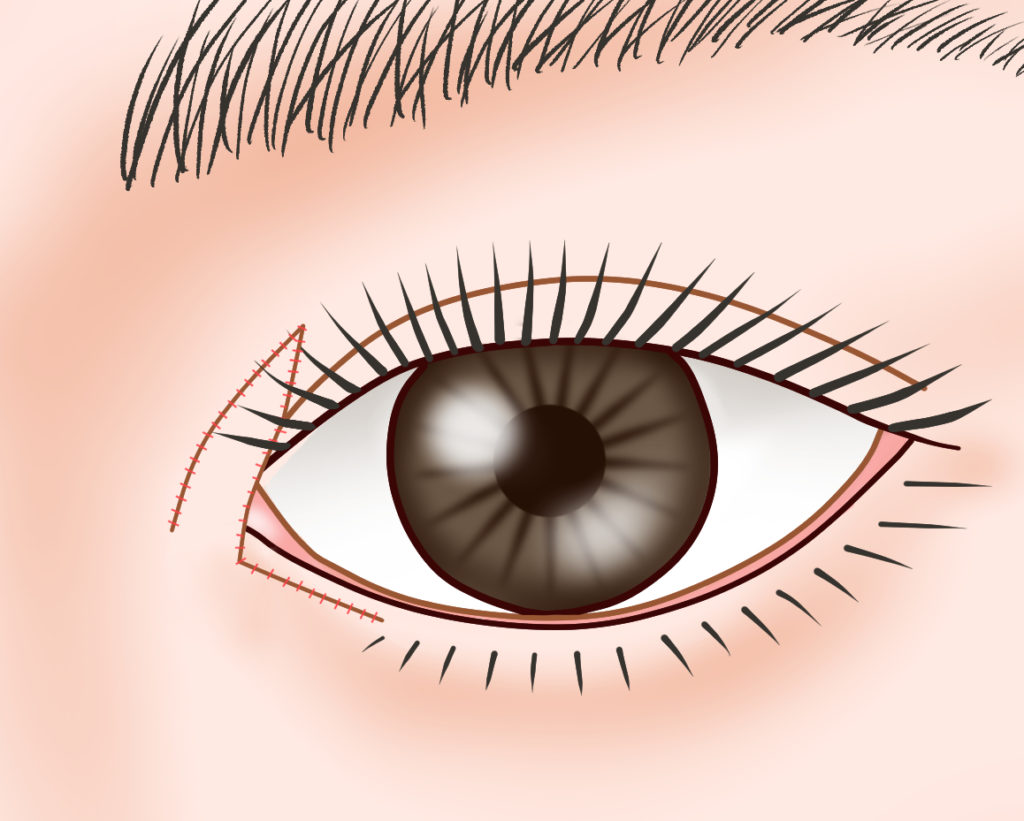
Island flap method
This method is used for minor correction after the Mongolian folds have been formed by reverse Z-plasty.
Presented at the 107th Congress of Japanese Society of Aesthetic Surgery.
For more information
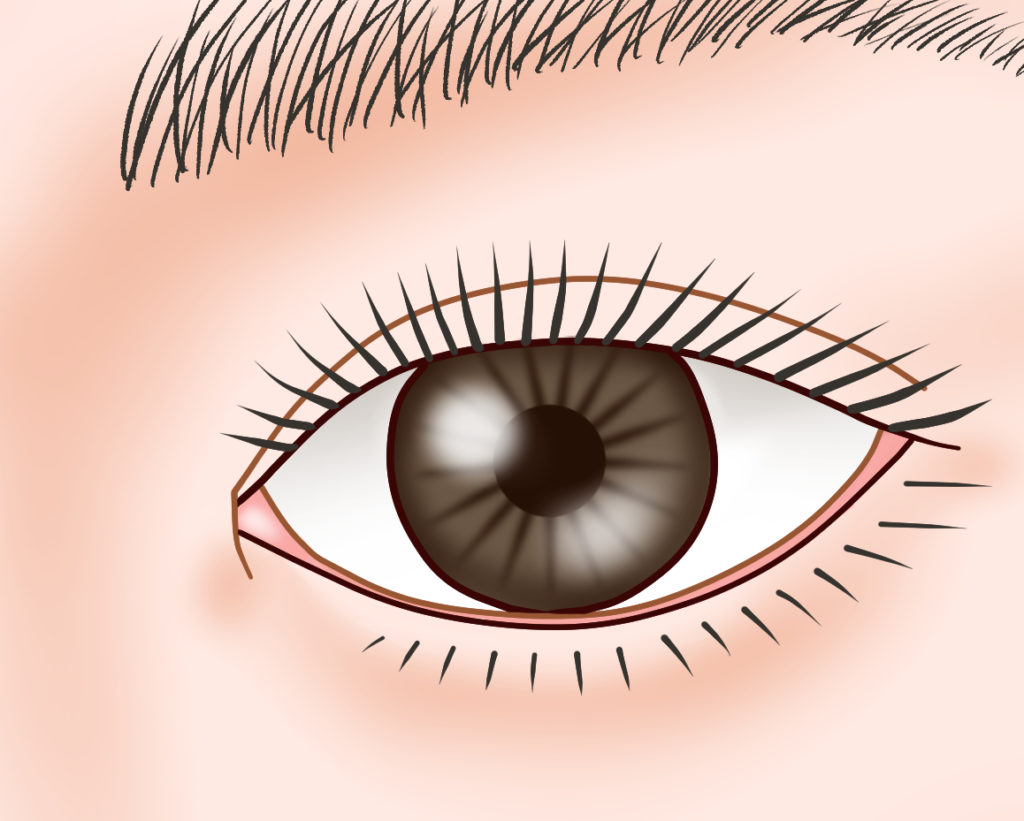
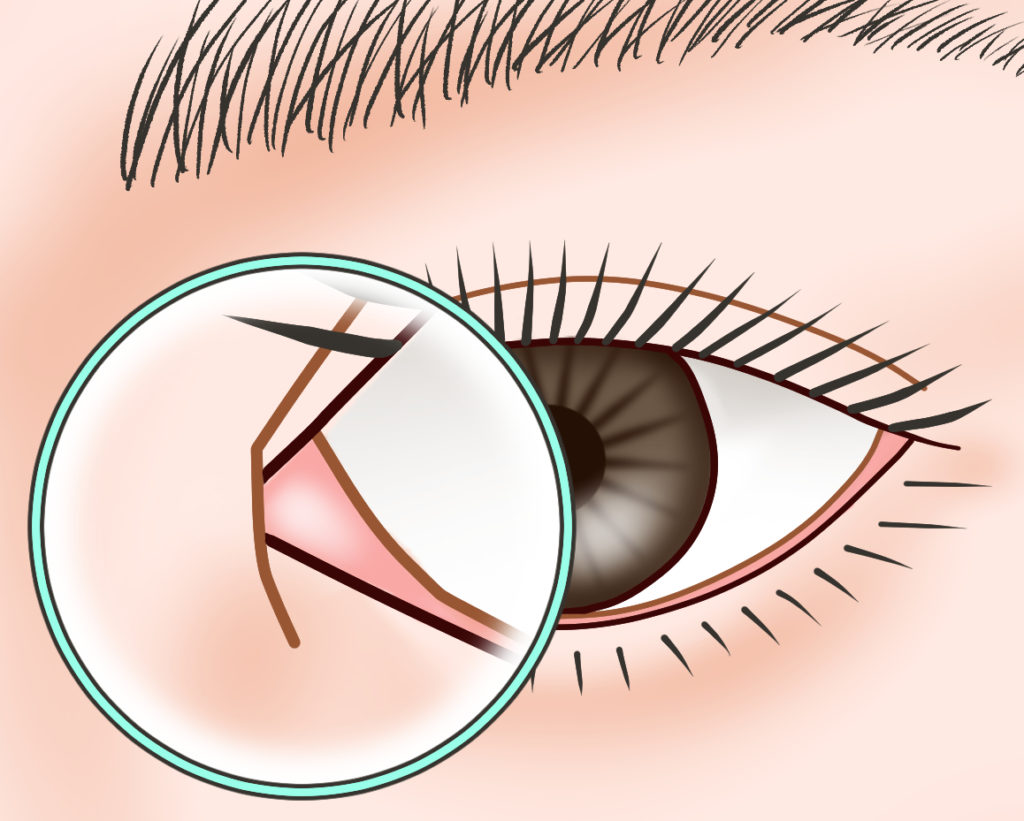
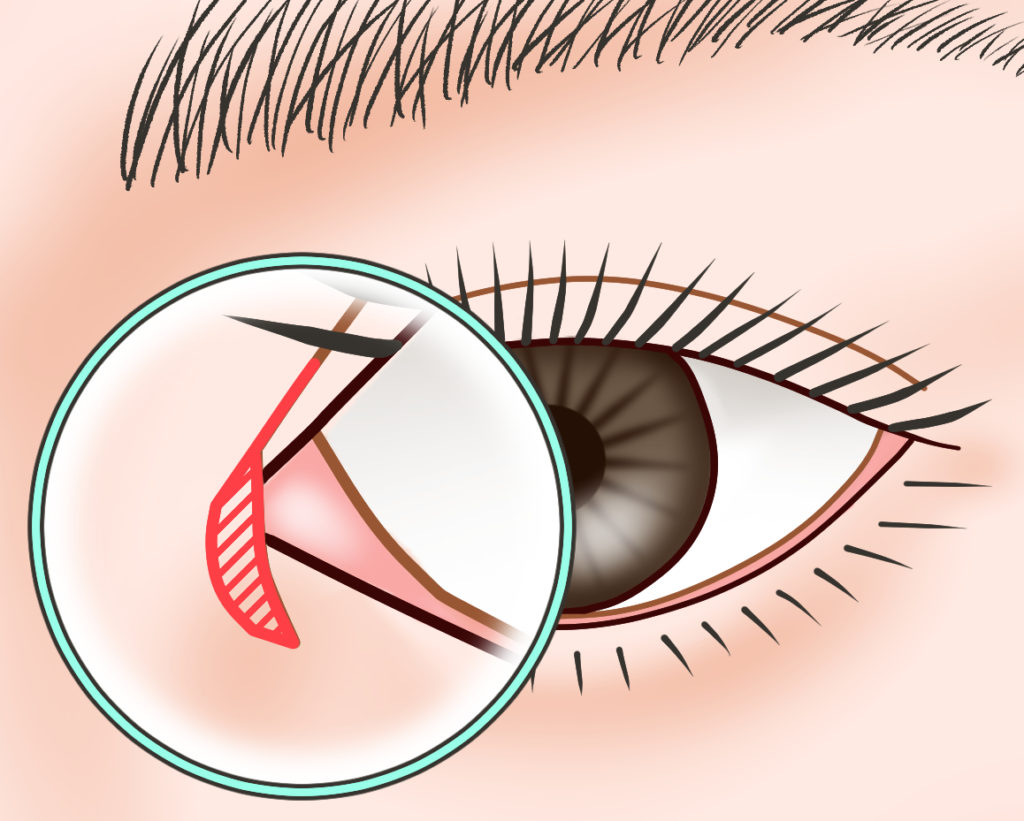
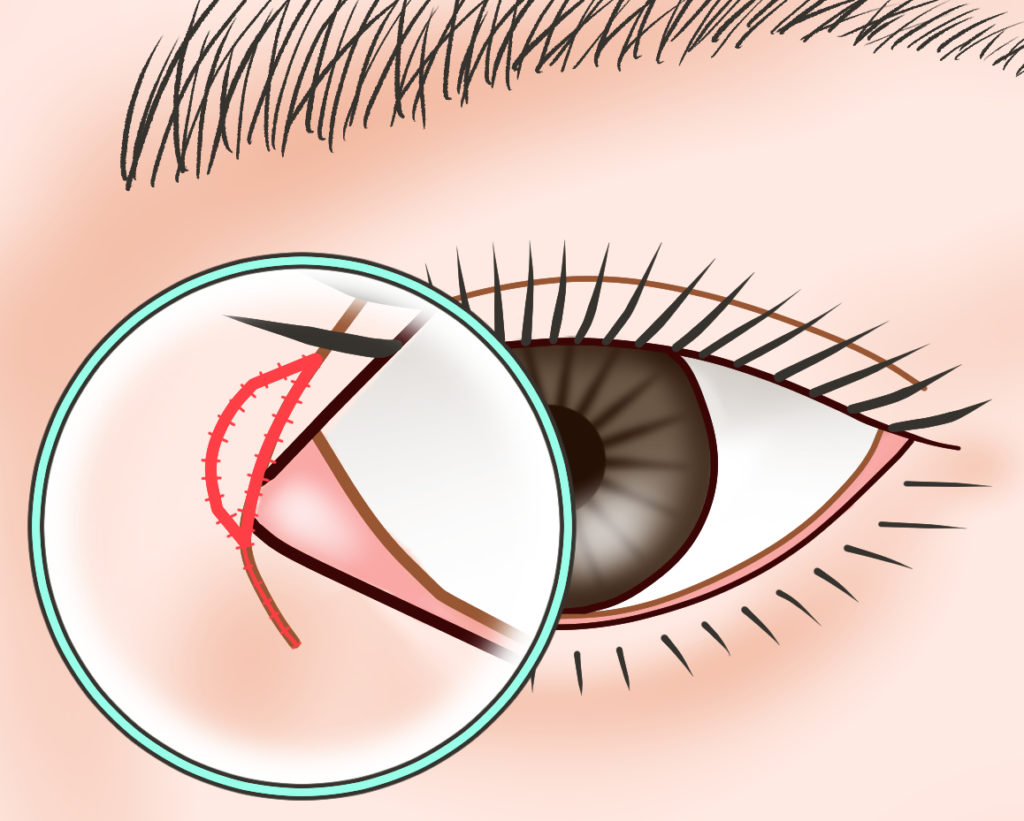
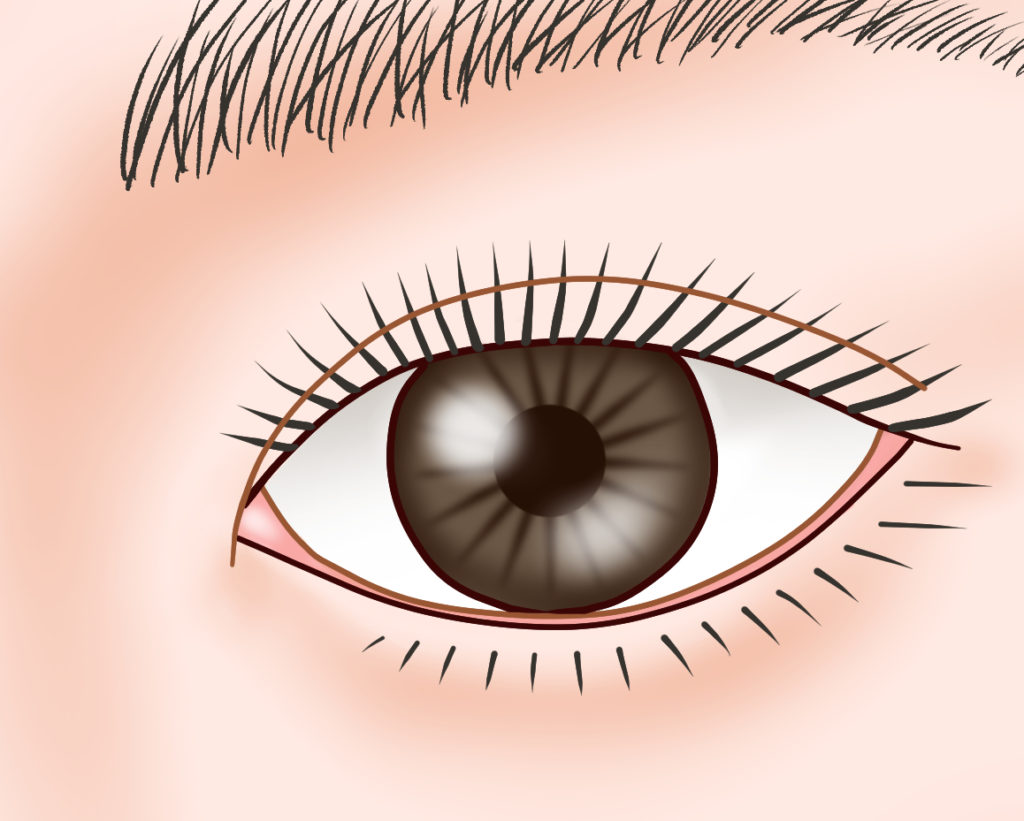
V-Y plasty
This method is used to compensate for mild tissue deficiency in the inner corner of the eye or to change the size of the Mongolian folds.
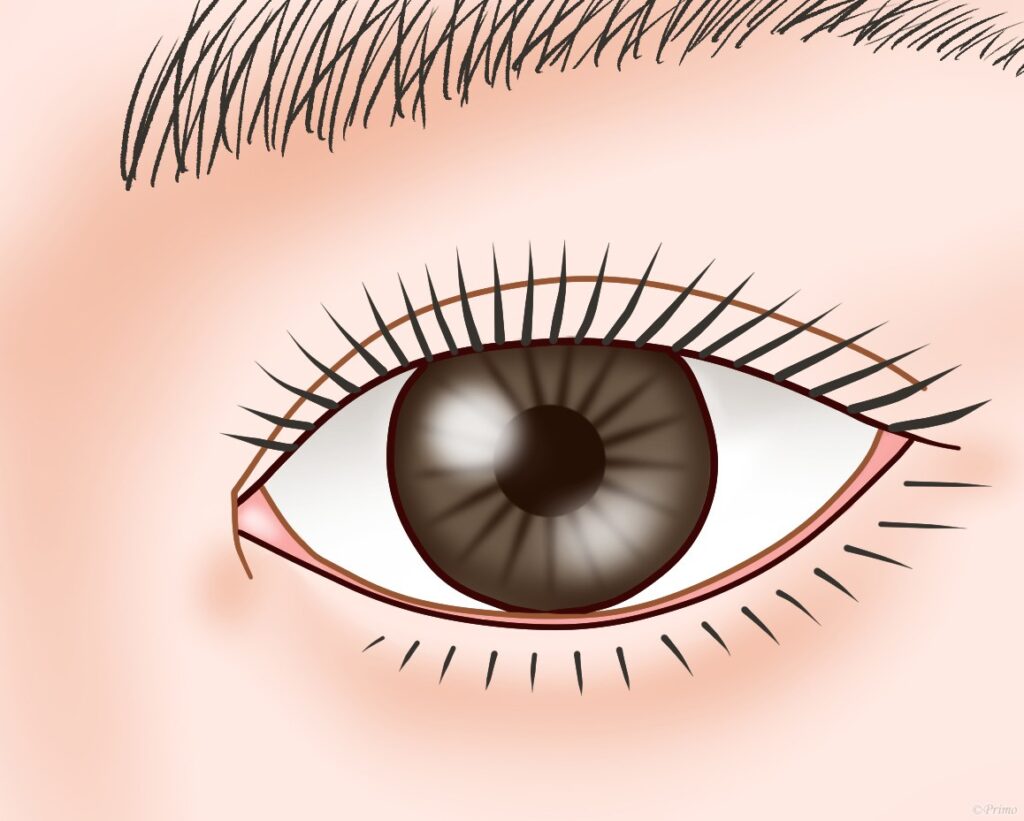
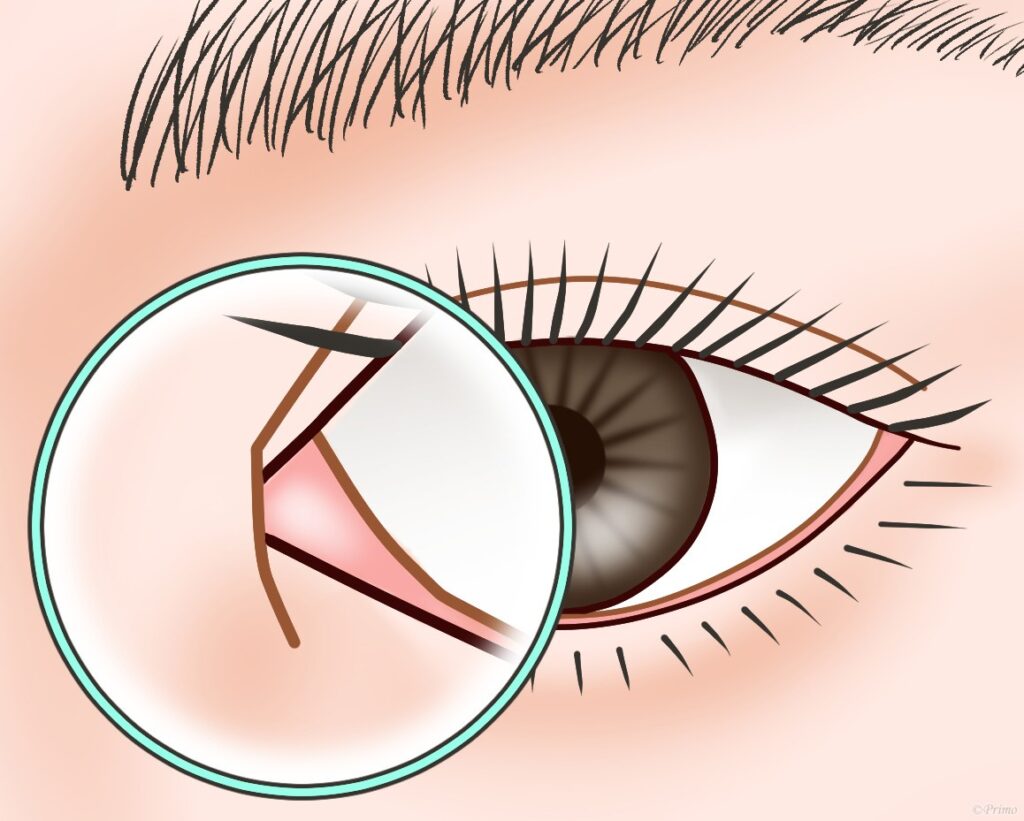
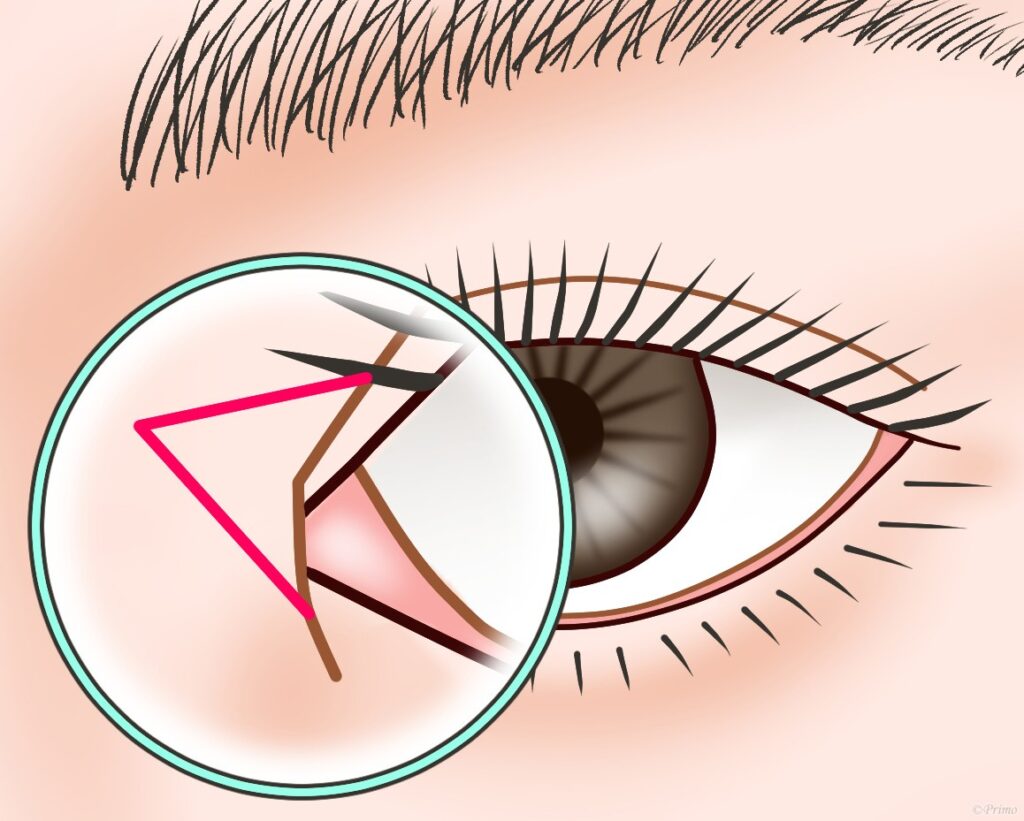
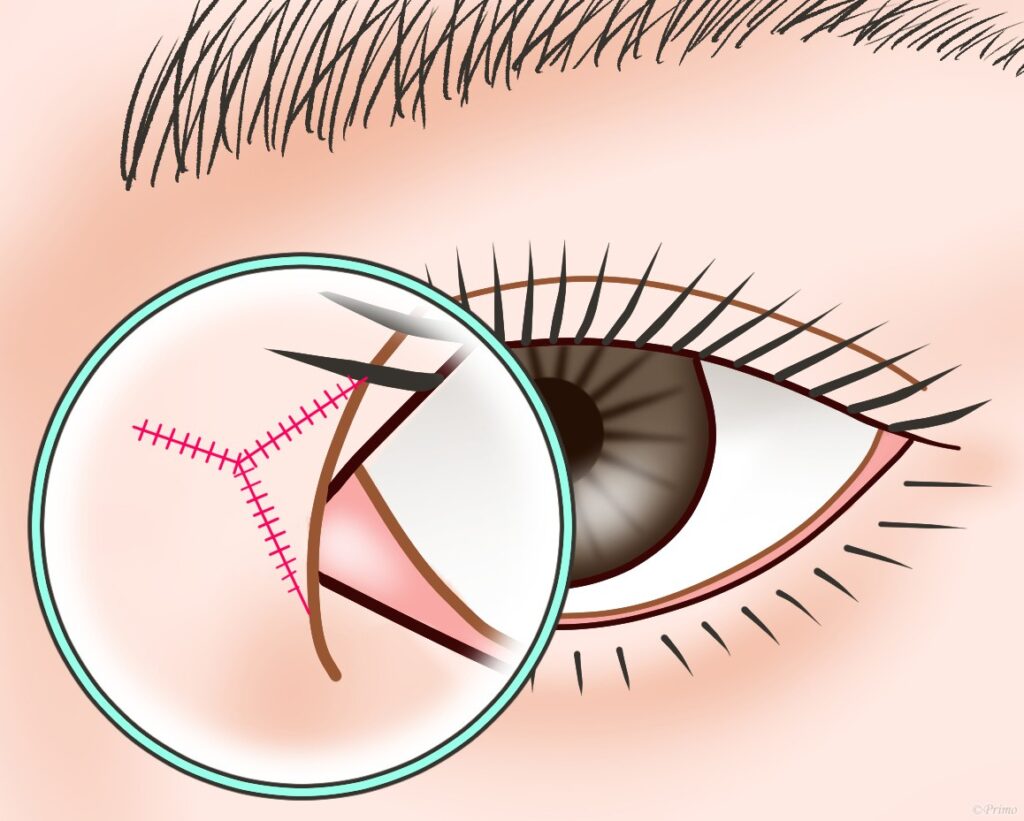
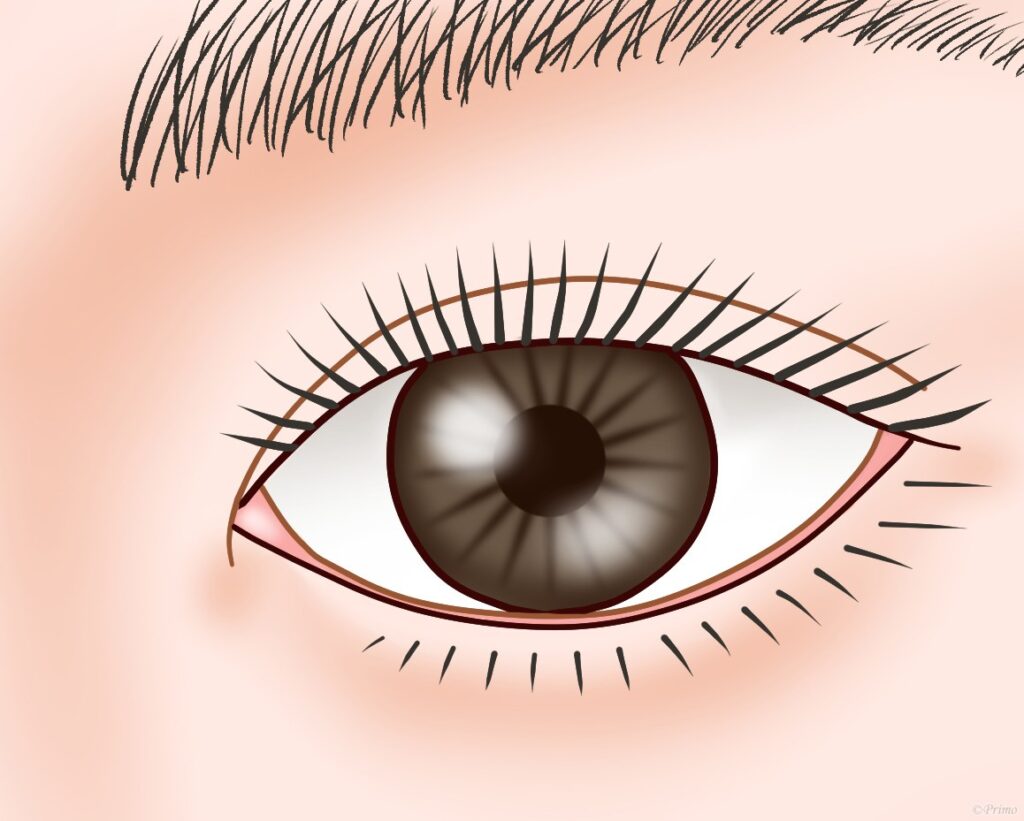
We use the best plastic surgical sutures for wound healing, which are internally sutured with high-performance absorbable ultra-fine thread and externally sutured with non-absorbable ultra-fine thread.
We also offer skin suturing with ultra-fine transparent thread.
Revision medial epicanthoplasty videos
Revision medial epicanthoplasty aftercare
《After surgery》
Condition of the affected area
The eye incision is sutured with a very fine black thread.The stitches are usually removed in 4-7 days.
The initial shape will differ due to swelling ot the wound.
Bruising may occur around the eye.The bruising will disappear in 1-2 weeks.
Post-operative checkup and aftercare
You will be examined by the doctor just before you go home on the day of surgery.
Antibiotics, painkillers (the pain is usually mild, but we prescribe them just in case), and gastric medicine will be prescribed for 3 days after surgery.
Lifestyle advice
You can wash your hair and take a shower on the same day after surgery.
Please only wash your face with water, not soap.You can use soap or facial cleansing foam from the next day onwards.However, please do not rub the wound.If the thread gets stuck or it tears, it may bleed.Please do not pick the scab or any other part of the wound, and try to rest.
Please do not apply any cosmetics to the affected area until the stitches are removed.
Please refrain from taking a bath or doing any strenuous exercise for about a week.
Make-up can be applied from the day of surgeryWhen sleeping, please use cushions to elevate your upper body and head. except around the eyes.
Please refrain from drinking alcohol and smoking for about a week.
Contact lenses can be worn from the day after surgery if there is no discomfort.They certainly can’t be worn 2-3 hours after surgery due to the effects of anesthesia.
《Days 4-7 after surgery》【Please book an appointment for stitches removal】
Condition of the affected area
The swelling will go down in a week or two.Things will completely settle down in about 6 months.
Initially, the scar will be red.The redness varies from person to person, but it will subside in 1-2 months.
In rare cases, there may be a slight bump, due to edema.
In rare cases, the suture thread may come out.
Bruising may occur around the eye.The bruising will disappear in 1-2 weeks.
Post-operative checkup and aftercare
You will be examined by a doctor.
Your stitches will be removed.
Lifestyle advice
Skin lotion and creams can be applied after stitches removal
Eye makeup is also OK, once the stitches are removed.
Please avoid rubbing the eye area too much.
From the 7th day after the day of surgery, you will be able to bathe and exercise as usual.
After removal of stitches, please keep the scar moisturized and UV protected.Our wound cream (1,100 yen inc. tax) can be applied to make the wound less prominent.
《1-3 months after surgery》【It is recommended that you visit for a checkup at this time.】
Condition of the affected area
The wound will gradually heal completely, but there will be some swelling for a while.
The redness and elevation of the scars will vary from person to person, but this will settle down in 1-2 months.
Post-operative checkup and aftercare
You will be examined by a doctor.
There is no post-operative procedure.
Lifestyle advice
Please continue to moisturize and UV-care your scars.
《6 months after surgery》【It is recommended that you visit for a checkup at this time.】
Condition of the affected area
The wound has almost fully healed.
Post-operative checkup and aftercare
You will be examined by a doctor.
There is no post-operative procedure.
Lifestyle advice
You can resume all of your daily activities.
FAQ
Pain will be minimal, because our local anesthetic contains extra agents to reduce any discomfort.
To minimize injection pain, the amount of anesthetic used is kept to a minimum of 1-1.5 cc for both eyelids.
Pain is also minimized by using an ultra-fine 34G needle, as well as a new needle for each eyelid.
The local anesthetic is administered very slowly which minimizes pain.
For those who are still afraid of pain, we offer general anesthesia.Under general anesthesia, you will be comfortably unconscious and breathing as usual.
The space between the eyes is too narrow because the Mongolian folds have been removed too much.The distance between the eyes can be widened with revision medial epicanthoplasty.
For 1-3 months after surgery, there will be some redness and stiffness. Redness can be concealed with make up.
Our method is based on Z-plasty, which tranfers skin without tension and uses absorbable thread (6-0 PDS) sutures, resulting in a clean surgical scar.
If you have persistent redness, we will provide appropriate treatment at the post-operative checkup (free of charge).
Makeup can be applied on the day of surgery except for the surgical site.
The stitches are usually removed 4-5 days after surgery.The day after the stitches are removed, you can apply makeup to your eyelids.
Yes. The good thing about Z-plasty is that it offers a high degree of freedom. It can be used to fully maximize the eye size, or to subtly reduce it’s appearance without significantly changeing the impression of the face.It can make subtle changes.
For revision medial epicanthoplasty, the swelling will usually dissipate after a week.
Post-operative pain is usually very mild.We will prescribe a mild analgesic and anti-inflammatory drugs just in case.
It will last 30-40 minutes.
Fees
| Revision medial epicanthoplasty | ¥385,000 |
|---|
All fees displayed include tax.
Post-operative course, downtime, risks, side effects, and complications
Underneath is a list of things that may occur.
In order to prevent any of these symptoms from occurring, we take safety measures and perform treatment with the utmost care.
We also have a solution for any symptoms should they occur.We will always improve your symptoms.
Post-operative course and downtime
Swelling
Major swelling will go down in 3-7 days after surgery.Mild swelling may be noticeable for a week or two.Things will completely settle down in about 6 months.
Bruising around the eye
There may be bruising around the eye.It sometimes occurs, but it will disappear in a week or two.
Eyelid discomfort
Immediately after revision medial epicanthoplasty, the eyelids will feel strange.This will disappear over time.
Scars
You will see some redness for 1-2 months after surgery.It will become less noticeable over time.
Risks, side effects, and complications
Exposure of buried absorbable sutures
We will remove the stitches.
Infection
Although rare, there is risk of infection with any surgery.
If infection occurs, it may be necessary to treat it with antibiotics or remove any pus by small incisional drainage.
Not enough or too much Mongolian fold
While the swelling subsides, we evaluate the eye shape and make adjustments by performing another revision medial epicanthoplasty or by making an incision in the Mongolian folds through medial epicanthoplasty.
Changes in eyelid morphology
Mongolian folds give a childlike appearance.The distance between the eyes becomes wider.The eyes become more hidden laterally.The impression of the face changes.
Scars
If white, shiny scarring occurs, it may make it slightly harder to apply makeup.
The scar may be red and raised.
The wound is treated with creams, injections, and oral medications.
If necessary, resection and re-stitching will be used to reduce the scar.
Dog ear
A skin elevation called dog ear is created at both ends of the suture.
The more excess skin from a short incision, the more visible the dog ear will be.By lengthening the incision line, the dog ear will be less noticeable.
Double eyelid shape
The formation of the Mongolian folds causes the double eyelid to become narrow.
If a parallel double eyelid is desired, it must be formed by further double eyelid surgery.
Eye surgery list
Detailed information on each eye surgery procedure, including case photos, case progress photos, procedure duration, post-operative course, downtime, aftercare, risks, side effects, and complications.
Supervising Doctor
Under the supervision of our plastic surgeons, we operate our website in accordance with medical advertising guidelines.
NORIHIRO OHBA M.D. Ph.D.
HEAD DIRECTOR/DIRECTOR
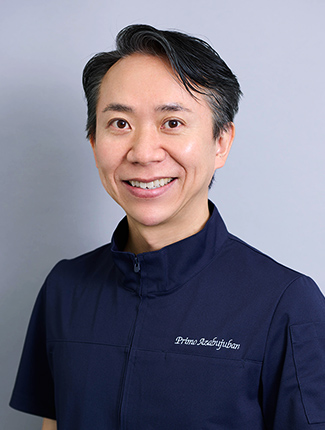
Qualifications and Academic Affiliations
Doctor of Medicine
Board Certified Plastic Surgeon, Japan Society of Plastic and Reconstructive Surgery
Board Certified Aesthetic Plastic Surgeon, Japanese Society of Aesthetic Plastic Surgery
Board Certified Aesthetic Plastic Surgeon, Japanese Society of Aesthetic Surgery
Anesthesiologist certified by the Ministry of Health, Labor and Welfare
Member of International Society of Aesthetic Plastic Surgery (ISAPS)
International Member of American Society of Plastic Surgeons (ASPS)
Member of Japan Society of Cranio-Maxillo Facial Surgery
Member of Japan Society of Laser Surgery and Medicine
Career
Graduated from Osaka City University Faculty of Medicine, 1996
Osaka City University Hospital Plastic and Reconstructive Surgery, 1996-1999
Osaka City University Graduate School of Medicine, 1999-2003
Osaka City University Hospital Plastic and Reconstructive Surgery, 2003-2005
Sano Memorial Hospital Plastic and Reconstructive Surgery, 2003-2005
Daito Central Hospital Plastic and Reconstructive Surgery, 2003-2005
Ritz Cosmetic Surgery Tokyo Clinic, 2005-2008
Primo Azabujuban Clinic, 2009~
Head Director, Primo Medical Corporation, 2011~
Head Director/Director, Primo Azabujuban Clinic, 2020~
